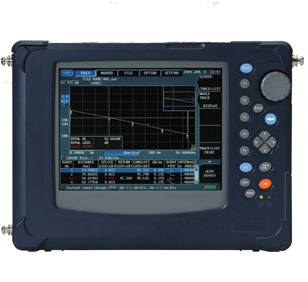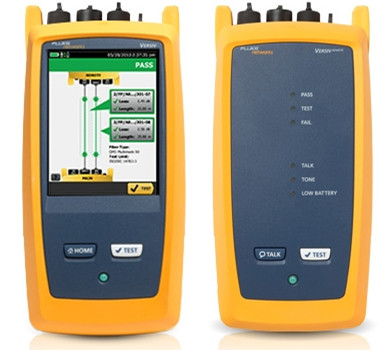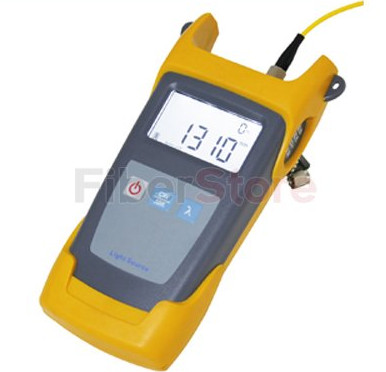As the technology advances further, the kinds of fiber optic testers also have increased. The variety of choices of such devices can be overwhelming to a would-be buyer. This paper will introduce you some common types, such as OTDR (optical time domain reflectometer), LTS (loss test set) and Source & Meter. But there is a problem you should know that the function of them is very similar since they all can be used to test cable installation or outside plant applications. As a result, it would be hard for us to select the right one for detecting our fiber optic events. Under this circumstances, here comes the question: OTDR, LTS and Source&Meter, which is better?
Before you know how to choose the right one from these fiber optic testers, you must have a basic knowledge of them. So next, OTDR (optical time domain reflectometer), LTS (loss test set) and Source & Meter, each of them would be given a brief introduction.
OTDR – OTDR is essentially an optical radar. It sends pulses of light into optical fibers, and then analyzes the minuscule amounts of light which is reflected back to them. Also, complex computations are used to determine the size and distance to events encountered in the fiber run. Events are defined as losses or changes in the fiber’s light-carrying capacity.

LTS – In the heart of the LTS, it is the combination of a power meter and light source. Measurements are made with a two stage process. First the source power is measured, then light is put through the device to be tested, and a second measurement is made. The difference in the measurements is the device loss.

Source & Meter – Sources and Meters perform the same functions as an LTS. But compared with LTS, it has greater flexibility since a single source and meter pair can also be used at each end of a link.

After knowing about the basic knowledge about these fiber optic testers, there are some features of them you should know so that you can choose the right fiber optic tester for your fiber networks.
Cost – Compared to a loss test set or source & meter, OTDR requires more technical expertise which determines it has higher labor expense. What is more, it has high asset expense and administration expense. So if you plan to use an OTDR frequently, it makes sense to buy one. If not, you had better rent one to reduce cost. As to LTS and Source & Meter, one LTS may be cheaper than a source / meter pair. Because it has less inventory to maintain and deploy, that is why its ongoing costs is lower.
Ease of use – OTDR readings must be analyzed and interpreted by trained and experienced people. It’s difficult for a less qualified installer to operate an OTDR and make sense out of it. As a result, using this device can require considerable time and effort. But LTS is the simplest way to ensure that connections are up to standard, and is widely used by almost everyone involved in hands-on work. Source & Meter is slightly harder to use when compared with LTS in that it does not have some sorts of automated wavelength synchronisation.
Application – OTDR is designed for outside plant (OSP) applications. Most OSP installations involve splicing single-mode fiber to get longer runs and the OTDR allows verifying the quality of the splice. But when that link is finished, it must still be tested for insertion loss with a light source, power meter and reference cables, just like premises cables. Premises cables rarely have splices and are short, often too short for the OTDR to measure. LTS can be used to simply and reliably measure end to end loss of installed systems, preferably using a bi-directional or two-way method at multiple wavelengths, with minimum inventory and modest technician skill levels. The use of Source & Meter is more flexibility. One source & meter can measure a link, whereas two LTS (Loss Test Set) instruments are needed. And a source is not needed to do transmission power measurements, so it can be used elsewhere.
From the above analysis, we can see that the cost of OTDR is the highest, and it is more suitable for experts to use. While the cost of LTS is the lowest, and it s relatively simple to use. Source & Meter is between them. In a word, these fiber optic testers are all indispensable instruments that can illuminate problems in your optical fiber before they bring your system to its knees. Once you are familiar with the features of them, you will be prepared to choose the right one to detect and eliminate your optical fiber events.
